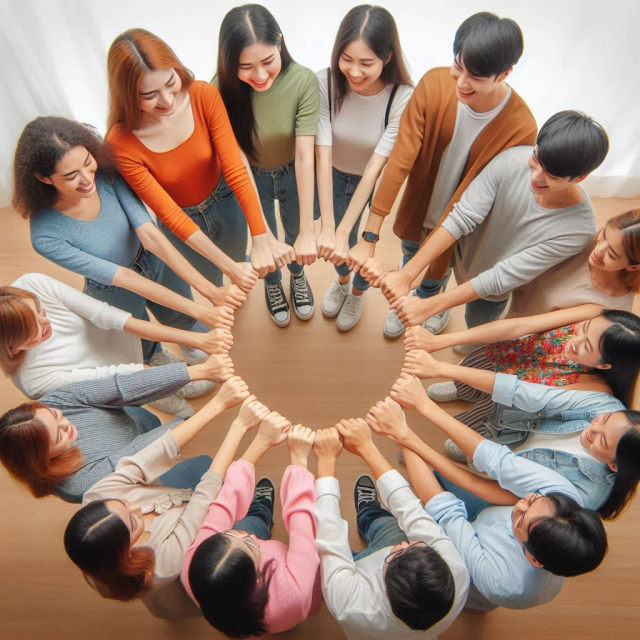Gender identity is a fundamental concept that is part of the human experience and reflects how a person perceives themselves in terms of gender. As societies evolve, so does our understanding of gender identity, which has moved from a strictly binary notion (male or female) to a more inclusive and diverse one. This article explores gender identity, its components, its impact on people's lives and the role of society in recognizing and respecting diverse gender identities.
Definition and Components of Gender Identity.
Gender Identity vs. Biological Sex.
It is essential to distinguish between gender identity and biological sex. Biological sex refers to the physical characteristics, such as chromosomes, hormones, and reproductive organs, that a person is born with. In contrast, gender identity is a person's internal, deeply felt perception of their own gender, which may or may not match their biological sex.
Gender Expression.
Gender expression is the outward manifestation of gender identity through appearance, behavior, and other means. It includes aspects such as clothing, hairstyles, body language and voice. Gender expression may or may not align with cultural norms and expectations of what is considered masculine or feminine.
Gender Roles.
Gender roles are the social expectations and norms about how individuals should behave, dress, and relate to each other based on their gender. These expectations vary widely between different cultures and historical periods. A person's gender identity can influence how they interact with these norms, accepting them, rejecting them, or adapting them to their own needs and perceptions.
Diversity in Gender Identity.
Binary and Non-Binary Gender.
Traditionally, societies have operated under a binary gender system, recognizing only two genders: male and female. However, many people do not identify exclusively with one of these two genders. Those whose gender identity does not fit into the traditional binary may identify as non-binary, genderfluid, agender, bigender, among others.
Transgender People.
Transgender people are those whose gender identity does not match their biological sex assigned at birth. They may choose to transition, which may include medical, legal, and social changes to align with their gender identity. Transition may involve hormone treatments, surgeries, name changes, and the adoption of new forms of gender expression.
Cultural Gender Identities.
Some cultures recognize gender identities that do not fit the Western view of the gender binary. For example, the "Two-Spirit" of some North American indigenous cultures represent a third gender that encompasses both masculine and feminine elements. In South Asia, hijras are recognized as a third gender and have a specific cultural and social role.
Impact of Gender Identity on People's Lives.
Mental Health and Wellbeing.
Congruence between a person's gender identity and their gender expression is crucial to their emotional and mental well-being. People who cannot live according to their gender identity due to lack of social, family, or personal acceptance may experience high levels of stress, anxiety, and depression. Recognition and support of gender identity are vital for mental health.
Discrimination and Human Rights.
Transgender and non-binary people often face discrimination in various aspects of life, including employment, housing, healthcare, and education. Discrimination based on gender identity is a violation of human rights. Legislative and public policy efforts to protect the rights of transgender and non-binary people are essential to ensure their safety and equity.
Inclusion and Visibility.
The visibility and representation of diverse gender identities in the media, politics and other public spheres are important for normalization and acceptance. The inclusion of transgender and non-binary stories and characters can help educate the public and reduce the stigma associated with gender diversity.
Strategies to Support Gender Diversity.
Education and Awareness.
Education is essential to increasing understanding and acceptance of gender diversity. Educational programs in schools, universities, and workplaces can address basic concepts of gender identity, challenge gender stereotypes, and foster an inclusive and respectful environment.
Inclusive Policies.
Institutions and organizations can implement inclusive policies that recognize and respect gender diversity. This includes allowing the use of preferred names and pronouns, providing access to inclusive bathrooms and locker rooms, and offering health coverage that includes transition-related medical care.
Psychological and Social Support.
Psychological and social support services are essential for people facing challenges related to their gender identity. Gender-affirming therapies, support groups, and community resources can provide the support needed for transgender and nonbinary people to live authentically.
Gender identity is an integral part of each person's identity and its recognition and respect are essential for individual and social well-being. As societies move towards greater understanding and acceptance of gender diversity, it is important that we continue to educate ourselves and work towards inclusion and equity for all people, regardless of their gender identity. Acceptance of gender diversity not only benefits transgender and non-binary people, but enriches and strengthens society as a whole.






